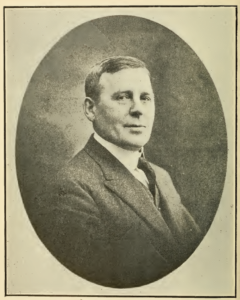A major milestone in the long history of St. Louis soccer happened on Nov. 16, 2022. That night marked the opening of 22,500-seat CITYPARK, the home of St. Louis City, the newest team in Major League Soccer. A capacity crowd watched Germany’s Bayer Leverkusen score a 3-0 victory over St. Louis City2, the MLS franchise’s entry in the third division MLS NEXT Pro league.
Such an edifice is something St. Louis has lacked since soccer first took root in the city in the 1870s. The only soccer-specific venue in the area, World Wide Technology Soccer Park, has been host to pro and international games since 1983, but could hold no more than 10,000 fans. (The capacity of today’s Soccer Park has been scaled back to 5,260.) Games have been played at bigger stadiums, including historical Sportsman’s Park and present facilities such as Busch Stadium and the Dome at America’s Center. But soccer didn’t own those places, and thus was at the mercy of those who did.
Not having a soccer-specific stadium prompted the city’s only other major-league outdoor pro soccer team, the NASL’s St. Louis Stars, to move to Anaheim, Calif., in 1977 after 10 years alternating between Busch Stadium II and Francis Field. The lack of viable plans for a soccer stadium halted subsequent efforts to bring a Major League soccer team to St. Louis — until the Taylor and Kavanaugh families came forth with an ultimately successful bid that included construction of the almost entirely privately financed CITYPARK.
How might the history of soccer in St. Louis changed if soccer had a place of its own long ago? It turns out that might have happened in 1932, according to evidence in the Louisa H. Bowen Archives and Special Collections at Southern Illinois University-Edwardsville.

The archives at SIUE include the Hap Meyer Collection. The Meyer Collection is a treasure trove of St. Louis soccer history contained in about 20 boxes. While the collection focuses on soccer in St. Louis from the 1890s to the 1960s, soccer historians often are most interested in the collection’s personal papers of Tom Cahill, “the father of American Soccer” and one of the founders of today’s U.S. Soccer Federation.
Buried in Cahill’s papers is documentation that talks were under way for a stadium in St. Louis “especially well adapted for exhibition of soccer, etc.” in April 1932. The site was located on the northeast corner of Chouteau and South Spring Avenues, about 2.5 miles west of today’s CityPark.
It is impossible to determine how far the talks went. No mention can be found in the St. Louis newspapers of the time. The only evidence of the proposal is a letter to Cahill from Henry R. Weisels, a realtor in St. Louis for more than 60 years. Dated April 14, 1932, the letter describes the site and offers a 15-year lease on the land. The last paragraph begins:
“In conclusion we wish to state in our opinion this is without question the only available assembled piece of property in the central part of the City of St. Louis that is especially well adapted for exhibition of soccer, etc.”
A clause in the proposed lease specifies that the land could be used for anything except “professional and semi-professional baseball.” Later in the letter, Weisels writes that the land “was selected as a site for the St. Louis National Base Ball Club by the writer several years ago.”
Those references to baseball remind readers of the role that Weisels played in St. Louis baseball history. Weisels fronted a group that tried to buy the Cardinals from then-owner Helene Britton in February 1916. Weisels offered $375,000 for the team with the intention of moving the Cardinals from Robison Field, their home at the time, to Sportsman’s Park. Weisel then intended to demolish Robison Field and divide the land into building lots. Britton, who wanted $400,000, spurned Weisel and sold the team in 1917 to a group that raised money by selling shares at $50 each. The Cardinals moved to Sportsman’s Park in 1920. Robison Field was demolished and the land became the site of Beaumont High School.
At the time of the letter, Cahill lived in South Orange, N.J. But St. Louis soccer was always on Cahill’s mind. Born in New York City in 1863, Cahill moved with his family to St. Louis in the late 1870s. He became intrigued with soccer, played in St. Louis, and became an influential organizer and promoter of soccer and other sports. His job with Spaulding Sporting Goods took him back to New York in 1910, where he became one of the leaders of soccer in the United States. But he kept tabs on St. Louis soccer throughout his life and was keen to promote soccer there.
Did Cahill launch a serious effort to build a soccer stadium in St. Louis, or did Weisels send an unsolicited letter to Cahill that was quickly forgotten? It’s impossible to say. But it’s intriguing to speculate how differently soccer might have developed if it had a place of its own in St. Louis starting in 1932.
